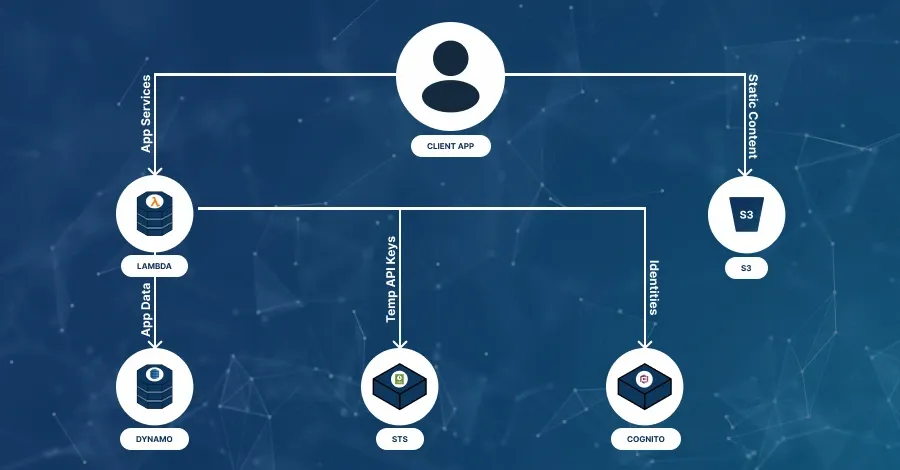Serverless Architecture is one of the fastest-growing public cloud services that provides backend infrastructure. Serverless computing, being the hot topic in the software architecture world — entails the “Big Three” cloud vendors—Amazon, Google, and Microsoft.
They are heavily invested in Serverless.
In a serverless world you are hostless; there are no servers to work with. One advantage this brings is the significantly less operational overhead — there are no servers to upgrade and no security patches to apply. But it also means that different kinds of metrics need to be monitored in an application, and thus there is a need for relearning how to tune the architecture.

What exactly is serverless architecture, and why are businesses increasingly tempted to invest in it?
Serverless Architecture or Serverless Computing means that your backend logic will run on some third-party vendor’s server infrastructure which you don’t need to worry about. It does not mean that there is no server to run your backend logic, but rather that you do not need to maintain it.
That is the business of these third-party vendors like AWS, Azure and Google. Serverless computing has 2 variants.
Backend-as-a-Service (BaaS or MBaaS — M for Mobile)
Function-as-a-Service (FaaS)
In other words, the code written by the developers runs on servers managed by the vendors, and the developers are not required to configure or oversee how the servers work. As a result, they concentrate more on the app's business functionality. Delivery times are decreased as a result of less time spent maintaining the server infrastructure.
Serverless architectures may benefit from significantly reduced operational cost, complexity, and engineering lead time, at a cost of increased reliance on vendor dependencies and comparatively immature supporting services.
How does it work?
A web application has two parts:
the backend
the frontend
The frontend, as the name implies, is in charge of what you see and can interact with. The backend, on the other hand, is in charge of the outcomes of those interactions, such as returning appropriate information from a database.
When using serverless architecture, the vendor is responsible for the backend of a web app by providing the server infrastructure required for the backend to function. In a serverless setup, developers can optionally use vendor-provided services and server tasks (e.g., database management, user authentication, storage, and so on), a solution known as backend-as-a-service (BaaS).
Choosing the server-side functionality provided by the BaaS vendor is common with simple apps that require no complex business logic.
A more recent approach to serverless is to use custom-written code for server-side tasks—function-as-a-Service(FaaS).
FaaS enables developers to deploy code containing pieces of business logic that execute upon interaction—event-driven computing—and build functionalities that go beyond what the serverless vendor provides.
Popular serverless architecture vendors with FaaS include:
AWS Lambda
Microsoft Azure Functions
Google Cloud Functions
IBM Cloud Functions
Major benefits of serverless architecture include:
Less time consuming
Because the vendor manages the server infrastructure, developers can concentrate their efforts solely on developing business-related features.
Deploying the code and managing the servers consumes significant resources and takes a significant amount of time. It is easier to introduce new features, fix or update separate functions with the FaaS approach to serverless architecture. This is a significant improvement over monolithic architectures, where the deployment process is time-consuming and inefficient.
More Time to Concentrate on Innovation
Because server management and administration are removed from the developer equation, the team is free to focus on innovation and the implementation of customer-centric features. More time can be spent on improving the user experience by adding features to an app.
Extensibility and scalability
Serverless architecture and FaaS scale easily—additional server resources are added based on traffic requirements. This reduces the cost of developing contingencies in the event of heavy loads. All traffic spikes are handled by the vendor. On the other hand, if there is slow traffic, you do not pay for idle resources, as you would in a traditional cloud-based model or in-house server infrastructure.
Cost Savings
The serverless model is based on a pay-as-you-go model, which means that the client only pays for the actual computation rather than upfront resource allocation, which can be costly when there is no traffic.
Furthermore, there is no need to rent or purchase the hardware and software required to manage and maintain server infrastructure. It's an especially appealing option for startups/MVPs because the costs of introducing the product to the market are kept to a minimum during the initial phase.
Examples of Serverless Architecture:
When you need to build lightweight, scalable apps quickly, serverless architecture is ideal.
Recommended use cases:
Web apps with inconsistent traffic/workload
Internet of Things devices
Chatbots & virtual assistants
Mobile app backends
Data processing
IT automation
Media processing apps
Where not to use Serverless Architecture?
Large Applications:
Large apps with predictable workloads and few spikes in traffic may benefit from traditional server architecture, which is also less expensive in this case. Such apps can still be hosted in the cloud, but with pre-allocated resources.
Migrating Legacy Apps:
The costs of migrating legacy apps with established workflows may be extremely expensive for serverless architecture to be considered. A monolithic application, for example, would have to be split into microservices before being deployed to the cloud and adapted to FaaS.
Is serverless truly the way of the future?
In some cases, choosing serverless architecture will be the best option, and we can expect businesses with ideal serverless conditions to embrace this technology more. The growing serverless adoption is especially evident for startups with low initial traffic, but enterprises such as Netflix, AOL, and T-Mobile have already recognized the potential of serverless architecture and are implementing it in production.
FAQ
Ques1: What are the limitations of serverless architecture?
Ans1: Limitations of serverless architecture include
- Limited control over the underlying infrastructure
- Potential cold start issues
- API Gateway limits
- Vendor lock-in
Ques2: What are the security considerations for serverless architecture?
Ans2: Security considerations for serverless architecture include


